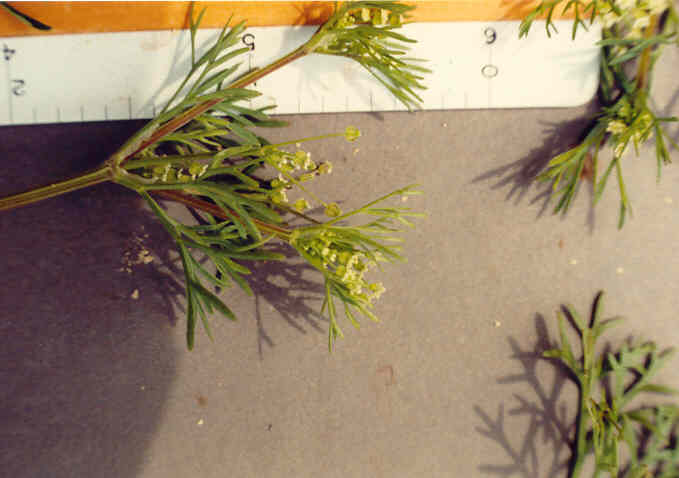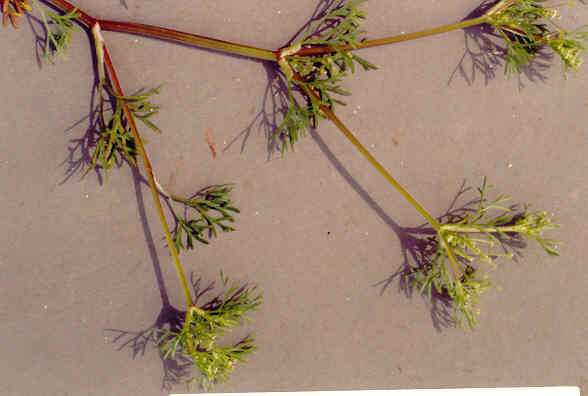
Apiastrum angustifolium Nutt.
Apiaceae (Carrot Family)
Native
Wild Celery
Mock Parsley
 |
Apiastrum angustifolium Nutt.Apiaceae (Carrot Family)Native
Wild CeleryMock Parsley
|
March Photo
Plant Characteristics: Smooth branching annual, stems slender, 0.5-5 dm. long, erect; lvs. 2-5 cm. long, ternately finely dissected; umbels naked, sessile; sepals obsolete; rays unequal, 1-5 cm. long; petals white; peduncles 0-1.5 cm. long; rays 2-3, pedicels few, unequal, spreading; fr. ellipsoid cordate, 1-1.5 mm. long, the ribs inconspicuous; stylopodium depressed; styles short; oil tubes solitary in the intervals and beneath the ribs, 2 on the +/- concave commissural side.
Habitat:
Common in dry sandy valleys and on slopes below 3000 ft.; Coastal Sage
Scrub, Chaparral, etc.; cismontane from San Diego Co. n.; L. Calif.; occasional
at desert edge; on Santa Catalina, San Clemente, Santa Barbara, Santa Rosa,
Santa Cruz Ids. March-April.
Name:
Apium, the ancient Latin name
for celery and Latin, aster, wild.
(Munz, Flora So. Calif. 71).
Greek, leptos, slender, thin,
small and phyllon, leaf. (Jaeger 139,196). Probably
referring to the slender leaf segments.
General:
Occasional in the study area. Photographs
taken along the road from the Newporter Inn to San Joaquin Hills Dr. (my
comments). The
wild celery, a small, fragile hairlike plant, which bears no resemblance to
table celery, provided a small seasonal food source in wet years to the
Cahuilla, the Indians of the San Bernardino Mountains and Colorado Desert.
(Bean 39). My observations of the plants
in the upper bay are that they are more robust than described here and are
bitter to the taste. (my comments). One species in the genus.
(Munz, Flora So. Calif. 71).
Text Ref:
Collins 60; Hickman, Ed. 141; Munz, Calif.
Flora 1010; Munz, Flora So. Calif.
71; Roberts 7.
Photo Ref:
Mar 2 85 # 15,16.
Identity: by R. De Ruff,
confirmed by F. Roberts.
Computer Ref: Plant Data 137.
Have plant specimen.
Last edit
 |
March Photo